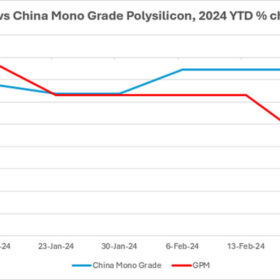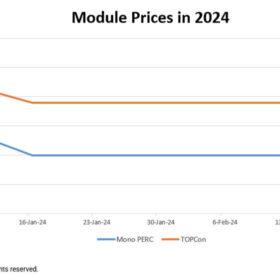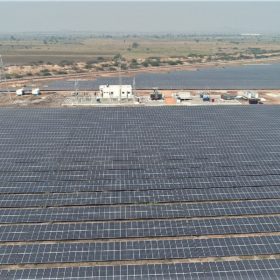Perovskite thin film: Out with the old, in with the new
Silicon-perovskite tandem solar requires optimization of both approaches, and embodies the weaknesses of each. Meanwhile, the use of pure thin-film devices offers a cheaper, simpler, and more sustainable PV solution for the United States.
Polysilicon prices further decouple, adverse factors thwart contract negotiations
In a new weekly update for pv magazine, OPIS, a Dow Jones company, offers bite-sized analysis on solar PV module supply and price trends.
Module prices steady as market mulls price hikes
In a new weekly update for pv magazine, OPIS, a Dow Jones company, provides a quick look at the main price trends in the global PV industry.
Perovskite: The next breakthrough in solar panel technology for India
Perovskite technology, with its potential for large-scale deployment and local production, presents a compelling pathway towards a more secure and sustainable energy future.
Solar cell prices hold steady as market weighs feasibility of increasing prices
In a new weekly update for pv magazine, OPIS, a Dow Jones company, provides a quick look at the main price trends in the global PV industry.
The rise of green finance: Financing the future of renewable energy in India
India has witnessed a surge in solar and wind energy projects, backed by investments from both domestic and international sources. Green finance plays a pivotal role in funding these projects.
Solar wafer prices momentarily stable, masking turbulence of industry consolidation
In a new weekly update for pv magazine, OPIS, a Dow Jones company, provides a quick look at the main price trends in the global PV industry.
5 ways to recycle Li-ion batteries
Recycling end-of-life lithium-ion batteries can help address the problem of material scarcity by reducing dependence on lithium mining by 25%, and cobalt by 35%. It would also ensure the local availability of recycled critical materials. Here’s a look at the different ways to recycle batteries.
Climate change mitigation: Embracing transparency, speed, and zero cost
Emerging technologies are enabling transparency, speed, and affordability across climate mitigation. Blockchain platforms like Poseidon impart radical transparency regarding carbon credits’ origins and impacts, resolving offset greenwashing issues.
Wafer prices stable ahead of Chinese New Year festivities
In a new weekly update for pv magazine, OPIS, a Dow Jones company, provides a quick look at the main price trends in the global PV industry.















